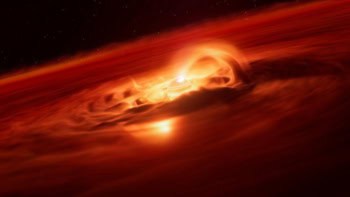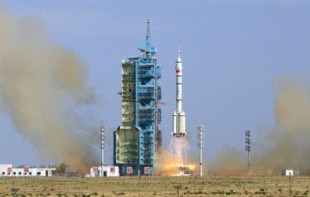A single massive star was the first cosmic structure to form after the big bang, according to a team of astrophysicists in the US. Recent simulations by Tom Abel of the Harvard Smithsonian Center for Astrophysics and co-workers have revealed how density fluctuations in the early universe could have led to the formation of a pre-galactic gas cloud with a lone star at its centre. Moreover, the model predicts that no other stellar object could have formed before this first star died in a supernova (T Abel et al 2001 Science to appear).

For 30 years astronomers have argued that clusters of densely packed stars, super-massive black holes and even planet-sized objects were the first objects in the universe. The diversity of these predictions is due to the thermal instability of the primordial gas and its chemically reactive nature – both of which are difficult to account for in analytical calculations. In contrast, the simulation by Abel and colleagues follows the chemical and radiative processes that occur in atoms and ions of hydrogen and helium.
Starting with a flat universe filled mostly with invisible ‘dark’ matter and 6% of ordinary matter, the simulation charts events that occurred some 13 million years after the big bang. Small density fluctuations prompted the formation of pre-galactic objects, which merge to form more massive structures. As these objects assemble, the primordial gas collects, cools and sinks to form a cold, dense cloud. Some 140 million years later, the core of this cloud had grown to be 100 times more massive than the Sun and it is sufficiently dense for hydrogen molecules to form.
According to the simulation, this ‘three-body’ formation of molecular hydrogen prevents the core from breaking up. Instead, a single proto-star, similar in mass to the Sun, forms at the centre of the core and rapidly accretes more mass to become a fully-fledged metal-free star. Abel and co-workers predict that the final mass of the star is between 30 and 300 solar masses, although the exact value depends on the detailed physics of the accretion. The team believes that such massive primordial stars offer a natural explanation for the absence of small metal-free stars in the Milky Way.



